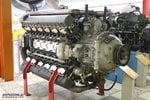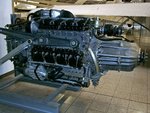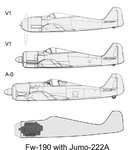delcyros
Tech Sergeant
After reading from the Jumo-222 compact 2000hp - 3500hp class engine, I wonder why it was not put into mass production. Only 240 specimen have been produced 1941 to 1945. The engine was more compact than the BMW-801, more powerful and about as heavy but didn´t required C-3 fuels.
I read that the Jumo-222 required to much rare ressources (but so did the BMW) or that it was abandoned for purely political reasons (Milch wanted to break the Junkers company).
The Ju-288 appearently showed the Jumo-222 beeing more reliable and economically efficient than the heavier and larger Db-610, so what was the case here? Any ideas?
I read that the Jumo-222 required to much rare ressources (but so did the BMW) or that it was abandoned for purely political reasons (Milch wanted to break the Junkers company).
The Ju-288 appearently showed the Jumo-222 beeing more reliable and economically efficient than the heavier and larger Db-610, so what was the case here? Any ideas?



